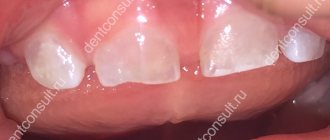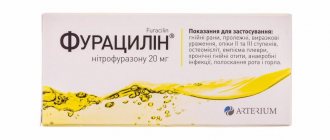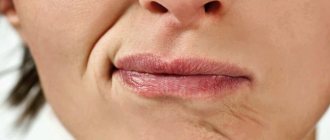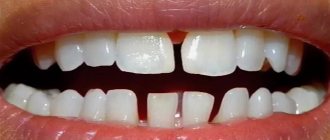Author of the article:
Soldatova Lyudmila Nikolaevna
Candidate of Medical Sciences, Professor of the Department of Clinical Dentistry of the St. Petersburg Medical and Social Institute, Chief Physician of the Alfa-Dent Dental Clinic, St. Petersburg
Everyone wants to have straight white teeth. A beautiful smile is not only a symbol of health. This is the key to self-confidence, one of the key factors in successful and fruitful communication. Is it worth mentioning that the white-toothed handsome man smiling at you in the reflection in the mirror every morning gives you an excellent mood for the whole day?
But what to do if plaque stubbornly appears on even teeth every morning? Can two cups of coffee during the day and a couple of packs of cigarettes put an end to a beautiful snow-white smile? Let's try to figure out why plaque appears on the teeth of adults, how to avoid it and how to deal with it.
What is plaque on teeth?
Unpleasant plaque is nothing more than a film-like accumulation of bacteria that forms on the teeth. Yes, such an accord creates an unpleasant color of the enamel, “gives” the owner bad breath and ultimately has a detrimental effect on the health of the teeth and gums.
The fact is that plaque is often caused by tartar, which negatively affects the enamel and also provokes inflammation of the gums.
Why does plaque form on teeth?
Typically, plaque formation is caused by several factors. The most common causes of black or yellow film on crowns are:
- Irregular, improper oral hygiene.
- Eating exclusively soft foods and avoiding fresh fruits and vegetables, which naturally remove plaque.
- Defects in tooth growth, malocclusion, and, as a result, difficulty in cleaning them.
- Negative effects due to taking certain medications.
- Periodontitis is an inflammation of the tissues surrounding the roots.
And, of course, those at particular risk for the appearance of black, yellow and brown plaque on the teeth are coffee and strong tea drinkers, smokers, as well as those who like to eat highly colored foods.
Recommendations from Dr. Zubastik
A snow-white smile is attractive and fashionable. If your teeth have acquired a yellowish tint, try one of the suggested remedies. As a doctor, I still recommend pharmacy methods, not home recipes. And don’t forget about the main condition: before whitening, make sure that the oral cavity is sanitized.
And now, as is tradition, video tips on how to overcome yellow teeth. Let's see?
Tags: activated carbon, Vodka, Gel, Yellow teeth, Yellow plaque, Mouth guards, strawberries, lemon, folk remedies, Whitening strips, hydrogen peroxide, soda, Table vinegar, Sage
About the author: Dr. Zubastik
Typically, a toothache begins to subside on the way to the clinic and finally goes away after 10 minutes of sitting in line to see the dentist.
- Related Posts
- Gums bleed when brushing teeth: what to do?
- Why does tartar form?
- Preventing dental caries: 5 simple tips
« Previous entry
How does plaque form on teeth?
Plaque on teeth in adults can be soft or hard. The first is always present on the mucous membrane, and the second does not form immediately; dentists call hard plaque tartar.
1. On each tooth there is always a structureless semi-permeable film called pellicle. The thickness of this film is only 1 micron. The pellicle contains immunoglobulin proteins and enzymes. All metabolic processes between enamel and saliva are carried out through it.
2. Microbes in the mouth continuously secrete heteropolysaccharides, which are attached to the pellicle. The accumulation of microbes provokes the appearance of plaque on the teeth.
3. Without cleansing, bacteria, molecules, dead cells and other food elements settle on the teeth; saliva helps the plaque harden and thicken.
4. Soft plaque mineralizes and turns into hard plaque.
Then the stones begin to put pressure on the gums, irritating the tissues and interfering with the normal metabolism between saliva and tissues. As a result, tooth enamel is destroyed, gums become inflamed, plaque penetrates into the deep layers of the tooth, and caries appears.
Types of plaque in adults
Contrary to popular belief, plaque on teeth in adults can be more than just yellow. Let's look at their most common types.
Dark brown coating
Why it appears: Yes, dark stripes on the teeth do not always indicate caries. Most often, teeth acquire such pigment due to nicotine tar and colored foods. Such plaque can also appear due to disturbances in the metabolism of calcium, vitamin D, and phosphorus. Surprisingly, dark plaque is also common in children; a brown tint to the teeth indicates enamel hypoplasia and dysbacteriosis. The cause of a dark shade is often a lack of saliva.
How to get rid of it: Contact your dentist. Unfortunately, it is impossible to remove dark plaque on your teeth on your own. No active cleansing or application can cope with this shade: too careful self-care can cause the condition to worsen. If plaque is caused by smoking, ultrasonic teeth cleaning can deal with it, but if the cause of the dark shade of the crowns is dysbacteriosis, installation of veneers is recommended.
Black plaque
Why it appears : A terrifying black plaque on the teeth is most often a symptom of dysbacteriosis, helminthic infestation, fungi in the oral microflora and gastrointestinal diseases in adults. This plaque can also appear due to the abuse of cigarettes, coffee and alcohol.
Dentists consider the most common reasons for the appearance of black plaque on teeth in adults:
- taking antibiotics;
- severe diseases of the spleen, liver,
- viral infections;
- abscesses;
- drug use;
- presence of copper products in the mouth;
- allergic reactions;
- difficult working conditions;
- parasites.
Black plaque can also appear due to chemotherapy.
How to get rid of it: Black plaque can only be removed with the help of a dentist. No amount of whitening pastes, rinses or balms will help remove it. To restore your teeth to their former whiteness, the doctor can also clean them with ultrasound or install veneers.
Yellow plaque
Why it appears : Often teeth are distinguished by their natural yellow pigment. This, as a rule, indicates that the human body is oversaturated with minerals, so the enamel has become yellow and hard, and bleaching it is very dangerous. A soft yellow coating at the roots is often inherited.
The most common reasons for the appearance of yellow plaque, dentists include:
- sugar abuse;
- poor oral hygiene;
- wearing braces;
- varied diets;
- age;
How to get rid of it: Regular professional cleaning, oral care, visiting the dentist twice a year, proper nutrition are the basis for white and healthy teeth. If you follow these simple rules and give up bad habits, you can get rid of the unaesthetic yellow plaque forever.
Folk recipes can also help in the fight against yellowness. For example, fresh strawberries or wild strawberries are excellent for cleaning teeth from plaque. It is enough to eat a couple of berries before brushing your teeth: berry acid will soften plaque on your teeth, and then it can be easily removed with a brush.
An effective remedy against yellow plaque is baking soda. However, you need to remember that soda cannot be used regularly - the substance is unsafe for enamel. It is optimal to use baking soda once every 1-2 weeks and brush your teeth with it instead of toothpaste.
White (gray) coating
Why it appears: It’s hard to believe, but it is a soft white, not a yellow coating that is always present on the enamel in children and adults. With regular cleansing, these food particles, bacteria, and mucous membranes can be easily removed with a toothbrush.
If a person neglects oral hygiene, the plaque hardens, stones form on the teeth, which then provoke caries.
The main causes of white (gray) plaque on teeth include:
- lack of vitamins;
- unbalanced diet;
- the predominance of soft food in the diet;
How to get rid of: White plaque can be dealt with at home. The main thing is to notice its appearance in time and not neglect your teeth in the future.
If the white plaque cannot be dealt with using improvised means, it is recommended to visit a dentist.
Brown plaque
Why it appears: Smokers and coffee drinkers most often suffer from brown plaque. After eating these products, a film forms that is almost impossible to remove with a toothbrush.
In rare cases, brown plaque on the teeth provokes the production of brown salt, which is formed due to the production of secretions into saliva.
Causes of brown plaque on teeth also include:
- frequent mouth rinses with potassium permanganate;
- the effect of chlorinated water;
- vapors of iron, mercury, lead, manganese, iron;
- acid tissue necrosis;
- Rhesus conflict of a pregnant woman.
How to get rid of it: Unfortunately, it is impossible to remove brown plaque on teeth using improvised means. To prevent the unpleasant color from appearing again, it is important not only to hygienically brush your teeth, but also to determine and, most importantly, cure the cause of plaque formation.
Green, red and orange plaque
Why it appears: Most often, unusual green, red or orange plaque on the teeth of children and adults is caused by various types of fungi. For example, chlorophylls make green enamel, and chromogenic bacteria make orange enamel.
Red enamel can be a symptom of porphyria, a hereditary disease in which the pigmentation of soft tissues is disrupted. Teeth can also turn bright red as a result of bleeding injuries (pulp sac ruptures).
How to get rid of it: Only a dentist can eliminate unpleasant staining of enamel. If necessary, the doctor will refer the patient for tests and examinations from other specialists, help eliminate the cause of the plaque and, of course, clean the teeth.
If plaque of any kind is detected, it is worth remembering that dentists do not recommend cleaning it exclusively with home remedies, with the exception of Global White. Of course, whitening pastes and effective folk recipes can help to cope with the defect for a short time. But only an experienced dental therapist is able to assess the neglect of plaque and prescribe the most effective method of treating it, based on the condition of the oral cavity of a particular patient.
How to prevent plaque formation?
As you know, the best treatment for diseases is their prevention. To prevent unaesthetic plaque on your teeth from bothering you and making you suffer in the dentist’s chair, remember a few rules that will help keep your teeth white, strong and smooth:
- Give up bad habits. No matter how trivial it may sound, it is smoking and alcohol abuse that are the strongest enemies of enamel. Put out the cigarette once and for all, minimize the consumption of wine, beer, vodka and other strong drinks, and within a couple of months you will notice that the condition of your teeth has noticeably improved.
- Review your diet . Coffee, soda, sweet juice and black tea are not at all safe for your teeth, even if you drink them through a straw. And caramels, toffees, cakes and chocolates not only leave an unpleasant coating on the enamel, but also provoke tooth decay. Include more fresh fruits, vegetables, and herbs in your diet - these are the foods that allow you to cleanse crowns naturally; in addition, plants strengthen the body.
- Don't write off sugar-free candies and chewing gum . These products activate salivation.
- Remember the rules of personal hygiene . Brushing your teeth twice a day is the key to healthy enamel, crowns, gums and nerves. Choose your toothpaste carefully, brush every square millimeter, be mindful of the space between your teeth, and be sure to remove the film from your tongue.
Effective and safe teeth whitening and cleansing of surface enamel stains is provided by Asepta Plus gentle whitening toothpaste. This paste has a unique multi-stage teeth cleaning system that guarantees whitening for 4 weeks without damaging the tooth enamel. Hydroxyapatite and potassium citrate, which are part of the paste, mineralize weakened tooth enamel, prevent the occurrence of increased tooth sensitivity, and calamus and eleutherococcus extracts strengthen the gums and accelerate the regeneration processes of the oral mucosa.
Clinical researches
Clinical studies have proven that regular use of professional toothpaste ASEPTA GENTLE WHITENING for a month allows you to lighten tooth enamel by 1.5 tones, increases anti-caries effectiveness by 3.4 times and increases enamel remineralization by 2.6 times.
Sources:
- Report on determining/confirming the preventive properties of toothpaste “ASEPTA PLUS” GENTLE WHITENING” Author: doctor-researcher A.A. Leontyev, head Department of Preventive Dentistry, Doctor of Medical Sciences, Professor S.B. Ulitovsky First St. Petersburg State Medical University named after. acad. I.P. Pavlova, Department of Preventive Dentistry
- Report on the determination/confirmation of the preventive properties of personal oral hygiene products “ASEPTA PLUS” Remineralization doctor-researcher A.A. Leontyev, head Department of Preventive Dentistry, Doctor of Medical Sciences, Professor S.B. Ulitovsky First St. Petersburg State Medical University named after. acad. I.P. Pavlova, Department of Preventive Dentistry
- Clinical studies of antisensitive toothpaste “Asepta Sensitive” (A.A. Leontyev, O.V. Kalinina, S.B. Ulitovsky) A.A. LEONTIEV, dentist O.V. KALININA, dentist S.B. ULITOVSKY, Doctor of Medical Sciences, Prof. Department of Therapeutic Dentistry, St. Petersburg State Medical University named after. acad. I.P. Pavlova
Treatment of yellow teeth, patient reviews
It should be remembered that yellowness can also be a symptom of some pathology. Therefore, the treatment of yellow teeth should be comprehensive and carried out only after the cause of yellowness has been established. Reviews from patients also note that treatment of yellow teeth can be successful only if provoking factors are excluded and all rules of oral hygiene are strictly observed. In addition to treatment, it would be advisable to use whitening toothpastes, powders, and gels.











